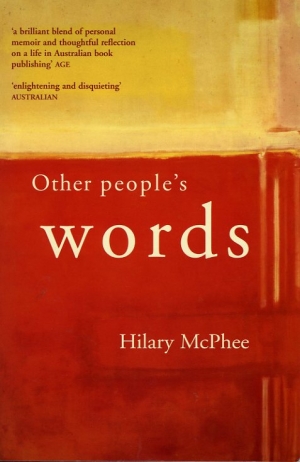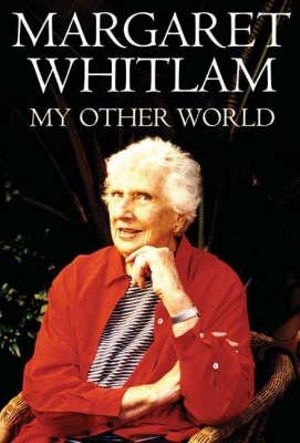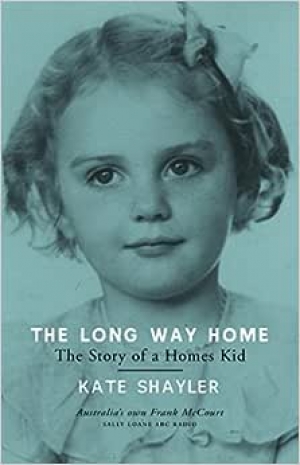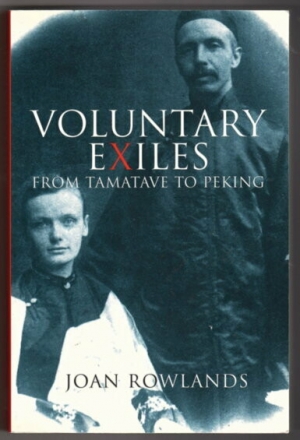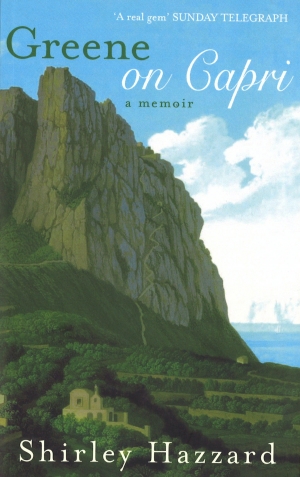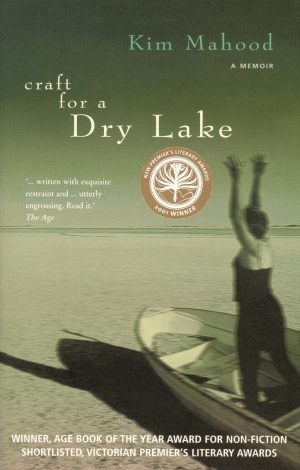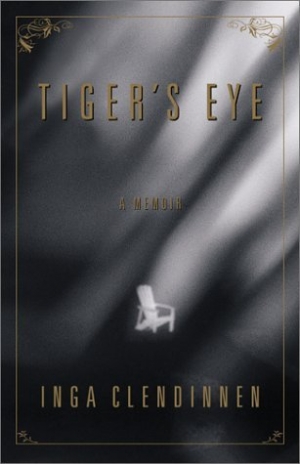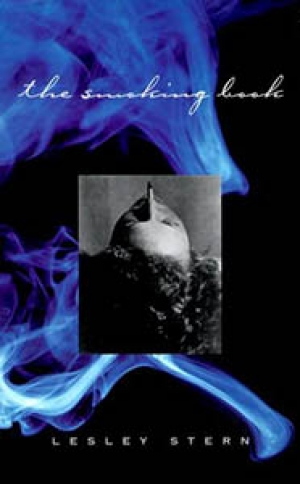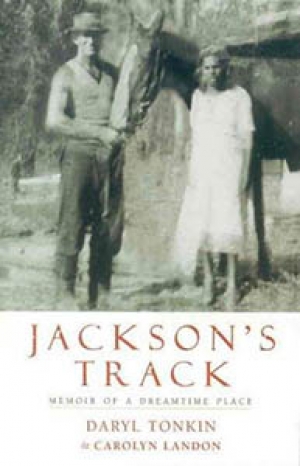Memoir
Kerryn Goldsworthy reviews 'Other People’s Words' by Hilary McPhee
‘The characters which survive,’ wrote Hilary McPhee at seventeen in the copy of Thomas Hardy’s The Return of the Native that she studied in her tiny matriculation class at Colac High in 1958, ‘are those who make some compromise with their surroundings ...
... (read more)This book, My Other World, is in Margaret Whitlam’s words, ‘the story of my travels as the leader of group study tours around the world’ in the 1990s. It is also another episode in the life journey of a remarkable woman who has the capacity and the vitality to go on inventing new lives. Previously a swimming champion, social worker, suburban mother, prime minister’s and ambassador’s consort, advocate for adult education, Margaret Whitlam in her seventies embarked upon a new career as a travel guide, leading her companions not only into Britain, France and Italy, but also into China and Central America and the Russia and Siberia of the early 1990s. Now in her eighties, she has begun another life, writing her first book.
... (read more)Despite attempts, revived in recent weeks, to discredit the term ‘stolen generations’, what cannot be denied in the semantics of that debate are the excruciatingly painful experiences of the children involved. While the meanings of such terms as ‘removed’ and ‘abandoned’ are complicated in a racist culture by indigenous peoples’ disenfranchisement, poverty and illiteracy, the devastating nature of separation from family in childhood must never be overlooked or underestimated.
... (read more)Madeleine Byrne reviews 'Voluntary Exiles: From Tamatave to Peking' by Joan Rowlands
After a three-month journey to Madagascar by steam-ship, the first thing to greet the newly married missionaries Thomas and Elizabeth Rowlands were fields of wet sugar cane. Brightly painted wooden cottages surrounded the harbour; former slaves and Arab, Indian, and Chinese traders filled the streets. ‘Rain fell heavily, but covers of rofia cloth, which swelled and thickened in the wet kept the travellers dry.’ Their granddaughter, Joan Rowlands, describes their inland journey in Voluntary Exiles. Crossing crocodile-infested rivers, bearers held the Rowlands aloft, ‘shouting and beating [the waters] with branches and poles to ward off attack’.
... (read more)John Docker reviews 'Greene on Capri: A memoir' by Shirley Hazzard
Why I’m gripped by this book I don’t know. Well, I do know. When I was in Vietnam late last year, on a gourmet tour, I purchased a pirated copy of Graham Greene’s The Quiet American, my first Greene novel. (Why I hadn’t read Greene before I also don’t know, though I’d loved his wonderfully bizarre script for The Third Man.) In Saigon I took green tea in the Hotel Continental, imagining I was sitting where Greene might have sat in the early 1950s. At last, I thought, I’m doing a bit of cultural geography. When I returned to Canberra, I read it, and immediately decided it was a great novel, extraordinarily prescient of the Vietnam War. What also impressed me was the sensibility of Fowler, the English narrator, resigned to knowing himself undignified, unkempt, duplicitous, lying, opium-enveloped, absurdly deluded in love; an active accomplice in murder, of Pyle the appalling American intelligence agent come to do good in Southeast Asia, and always innocent in his own eyes, whatever he disastrously does.
... (read more)‘We had always been close’ is the first sentence of Kim Mahood’s beautifully crafted memoir. She is speaking of her father who was killed in a helicopter crash while mustering cattle on his remote Queensland property. Craft for a Dry Lake is about the journey she made through the outback country of her childhood following his death.
... (read more)Ten years ago, when she was in her early fifties, Inga Clendinnen fell ill with a disease of the liver that would have killed her if transplant surgery had not improved in time to save her life. In hospital she began to write, as much to hold herself together as for any other reason. Without a trace of self-pity she tells of the frightening first symptoms of her illness, its diagnosis and the initial gloomy prognosis, her times in hospitals, her responses to the hospital, to other patients and to that special group of ‘comrades’ who have suffered the same illness and its awesome treatment.
... (read more)David McCooey reviews 'The Twelfth of Never: A memoir' by Louis Nowra
Louis Nowra was born in 1950 and is – as he presents himself in this memoir – that very mid-century thing, an outsider. An outsider in terms of class, mental constitution, and sexuality (for a time), Nowra suffers a worse, and originary, alienation from his mother. Being born on the fifth anniversary of his mother’s shooting of her father ...
... (read more)George Papaellinas reviews 'The Smoking Book' by Lesley Stern
When I was still a jot at uni, a medical student friend stumbled late out of her latest lecture and reassured me. And then she assured me, ‘It was horrible! We had slide after slide of some dead smoker’s lungs. And they were disgusting! I’m gonna be sick! Give me a cigarette!’ That’s when I first understood that ‘smoking’ was not ever going to be a straightforward subject.
... (read more)Rolling Column | Alison Ravenscroft on 'Jackson’s Track: A memoir of a Dreamtime place' by Daryl Tonkin and Carolyn Landon
When I first picked up a copy of Jackson’s Track: A memoir of a Dreamtime place (Daryl Tonkin and Carolyn Landon, Viking 1999), I expected to find the life story of an Aboriginal woman. The striking cover photograph the 1940s of Euphemia Mullett in high-heeled shoes and light summer dress, standing beside a white man and his horse in a forest clearing suggested it, as did the reference to the dreamtime in the book’s title. I soon discovered my mistake. Jackson’s Track is instead the memoir of the white man in the photograph, Daryl Tonkin, who owned land and a timber mill at Jackson’s Track, West Gippsland, for over forty years from the mid-1930s. During this time, an Aboriginal community of over 150 people established itself at Jackson’s Track, setting up camp in the forest and working for Tonkin, felling timber for the mill. Euphemia Mullett was with those people attracted to the promise of work at Jackson’s Track, and she would go on to live there for over thirty years as Tonkin’s wife.
... (read more)
